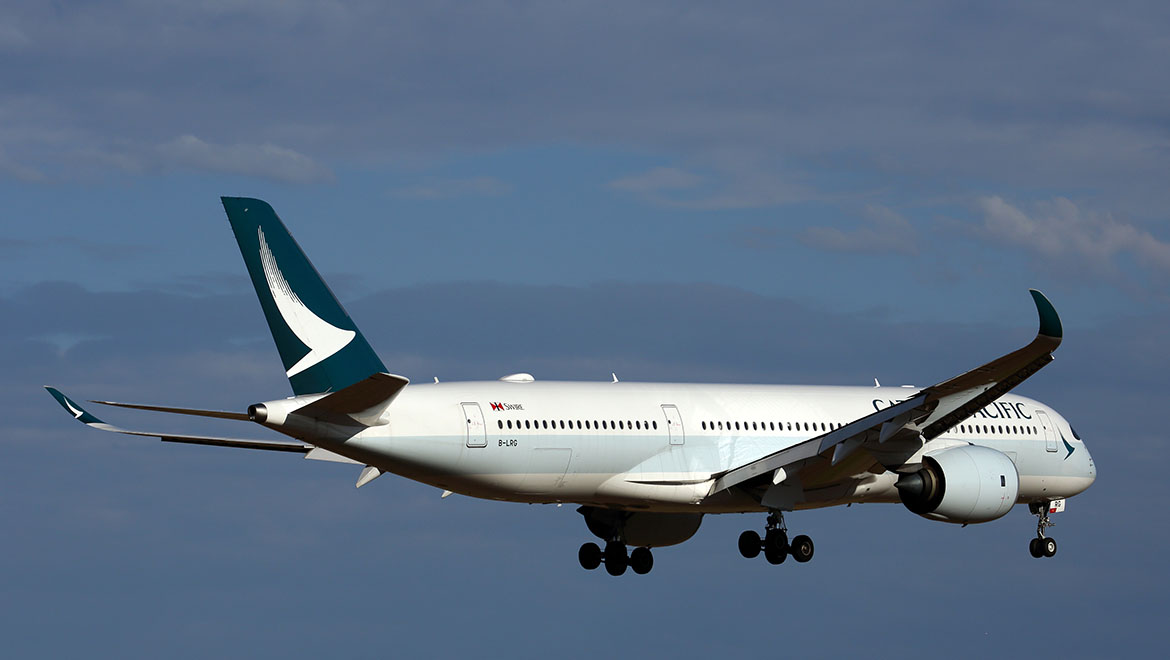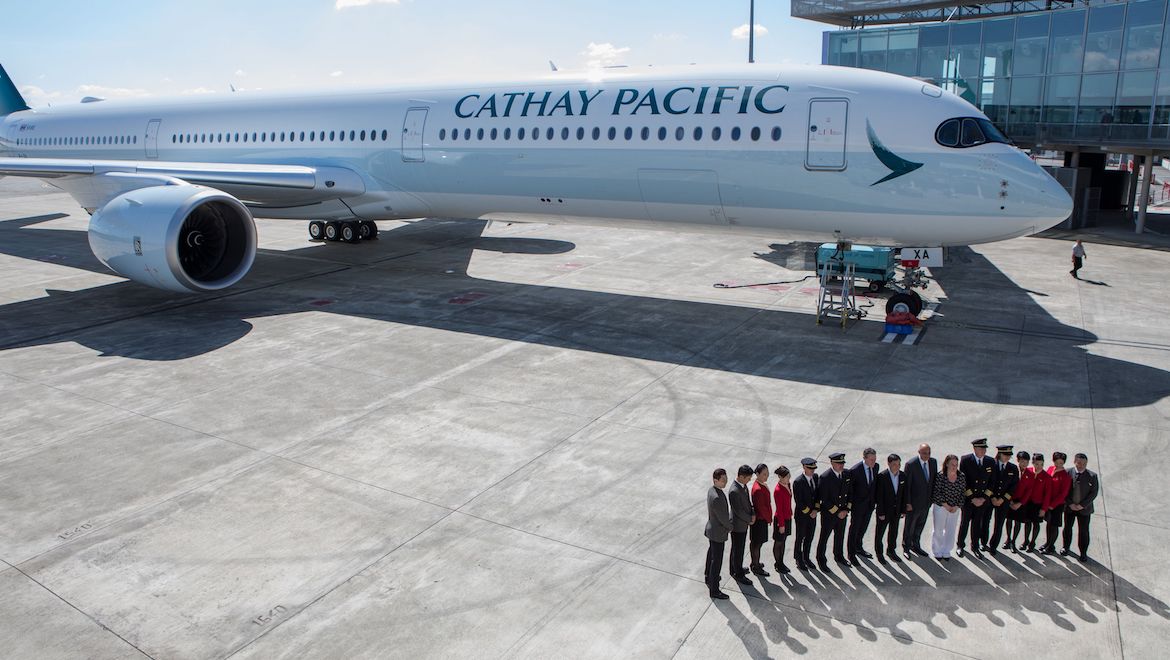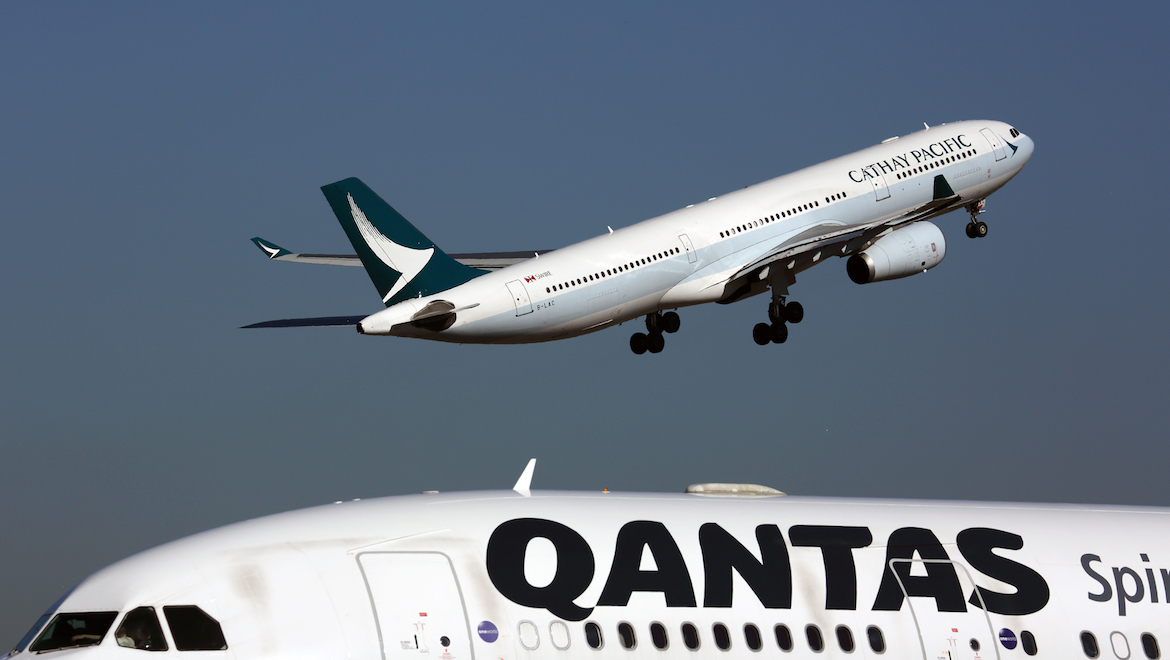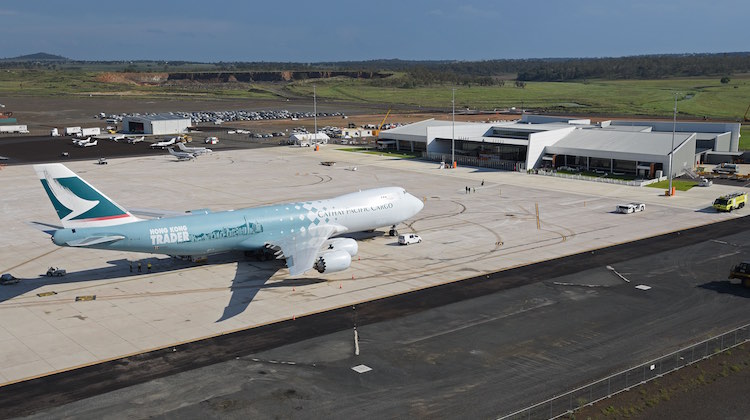
Cathay Pacific has reported a return to profitability in calendar 2018 as improved passenger and cargo demand helped offset higher fuel costs and adverse currency movements.
The company posted net profit of HK$2.3 billion (A$423 million) for the 12 months to December 31 2018, a turnaround from a loss of HK$1.3 billion (A$227 million) in the prior corresponding period.
Revenue rose 14.2 per cent to HK$111 billion, Cathay Pacific said in a regulatory filing to the Stock Exchange of Hong Kong on Wednesday.
“The passenger business benefited from capacity growth, a focus on customer service and improved revenue management,” Cathay Pacific chairman John Slosar said in the company’s full year results.
“Load factors were sustained and yield improved despite competitive pressures. The cargo business was strong. Capacity, yield and load factors increased.”
Cathay Pacific said yields – an industry term measuring average airfares per passenger – rose 6.7 per cent in calendar 2018, while revenue from passengers carried rose 10.1 per cent to HK$73 billion.
The company said the improved yield reflected better premium class passenger demand, fuel surcharges and revenue management initiatives.
However, total fuel costs rose 31 per cent due to higher fuel prices and more flying.
Meanwhile, a stronger US dollar and weaker Chinese renminbi weighed on the bottom line.
The result ends a two years of consecutive losses at the Hong Kong-based Cathay Pacific, which has battled the rapid international expansion of Chinese airlines and the ongoing rise of Middle East carriers offering long-haul to long-haul connections through their hubs that have bitten into previously lucrative markets.
In particular, the growth of Chinese carriers on international routes has reduced the number of passengers from China transiting through Cathay’s Hong Kong hub.
And at the budget end, Asia-based low-cost carriers have won passengers happy to pay lower fares for a no-frills product on short- and medium-haul routes.
In response to the changing market conditions, in 2016 Cathay Pacific embarked on a three-year transformation program that comprised a reorganisation of the business, hundreds of staff layoffs and adding more seats on existing aircraft, among other initiatives.
There has also been an investment in new, more fuel-efficient aircraft for Cathay Pacific and its regional wing Cathay Dragon.
Slosar said the transformation program has had a positive impact.
“We focused on finding new sources of revenue, building our network and strengthening the Hong Kong hub, delivering more value to our customers and improving productivity and efficiency,” Slosar said.
“In 2018, we restructured our operations outside Hong Kong, benefited from a series of productivity improvements, increased our digital capabilities and concentrated on global business services.
“In 2019, we will continue to reorganise our nine core business processes, to benefit from associated underlying structural initiatives and to build a culture of continuous improvement.
“We remain confident in the ability of our transformation programme to enable us to deliver sustainable long- term performance.”
Cathay Pacific has been taking delivery of new Airbus A350-900s and A350-1000s that has allowed the airline to open up new destinations.
In 2018 Cathay Pacific received its first A350-1000 and had eight of the type by the end of the year. The airline expected to have 20 A350-1000s by 2021.
B-LXA for @cathaypacific has arrived pic.twitter.com/KxhRJKTx0R
— G-DLEE AVIATION 2021 (@JournoDannyAero) June 19, 2018
The airline also has 21 Boeing 777-9Xs also on order that are due to arrive from 2021.
Similarly, Cathay Dragon has 21 Airbus A321neos on order due for delivery from 2020.
Cathay Pacific said six aircraft were retired in 2018 – three Airbus A330-300s, one Boeing 747- 400BCF, one Boeing 777-200 (which was donated to a museum) and one Boeing 777-300ER.

Australia, New Zealand show improvement
Cathay Pacific said competition on its Southwest Pacific network, which covers Australia and New Zealand, was strong, reflecting increases in other airlines’ capacity.
However, it said less reliance on transit passengers helped improve yield.
Cathay Pacific said yields on its South West Pacific network, which covers passenger flights to six points in Australia and two destinations in New Zealand, rose 0.8 per cent.
While the Australia-Hong Kong market had been dominated by Cathay Pacific and Qantas for many years, Virgin Australia entered the contest in July 2017 when it started nonstop Melbourne-Hong Kong flights with Airbus A330-200s, with Sydney-Hong Kong added a year later.
In the 12 months to December 31 2018, Cathay Pacific said capacity to Southwest Pacific, measured by available seat kilometres (ASK), rose 3.5 per cent, while passenger load factors fell 1.5 percentage points to 83.2 per cent.
The airline has been replacing 251-seat, three-class Airbus A330-300s with Boeing 777-300ERs (340 seats) and A350-900s (280 seats) on its Australian routes.
In late 2018, Cathay Pacific also forged a codeshare partnership with Qantas covering routes beyond Hong Kong and domestic destinations in Australia, as well as Cathay Pacific’s Cairns-Hong Kong and Perth-Hong Kong services.
Qantas has also sought regulatory approval for a deeper codeshare partnership with Cathay Pacific involving each other’s flights from Brisbane, Melbourne and Sydney to Hong Kong when part of an itinerary involving a connection beyond Hong Kong or a domestic Australian flight.
Virgin Australia and the Australian Competition and Consumer Commission (ACCC) have raised concerns about the proposed codeshare.

Cargo improves
There was also good news on the cargo front, with Cathay Pacific describing demand as “robust” in calendar 2018 as the volume of freight carried grew faster than available capacity.
Revenue from Cathay Pacific’s cargo business rose 18 per cent in calendar 2018, compared with the prior corresponding period, while yields improved 14.7 per cent.
“Trans-shipments from the Indian sub-continent, Europe, Japan and Southeast Asia were strong,” Cathay Pacific said.
“E-commerce shipments from Asia were strong. Exports of machinery and food from Europe and the Americas to Asia increased. We carried cargo to and from more places in Europe as we extended our passenger network.”

Outlook challenging
Looking ahead, Slosar said the business environment was expected to remain challenging in 2019, with a stronger US dollar and uncertainty due to geopolitical discord and global trade tensions dampening passenger and cargo demand.
“Competition will remain intense, especially in economy class on long haul routes,” Slosar said.
“Operational constraints will impose additional costs. These factors will affect both the passenger and the cargo business.
“We will compete hard by extending our route network to destinations not currently served from Hong Kong, by increasing frequencies on our most popular routes and by operating more fuel-efficient aircraft.”
VIDEO: A look at the making of Cathay Pacific’s first Airbus A350-1000 from Airbus’s YouTube channel.















